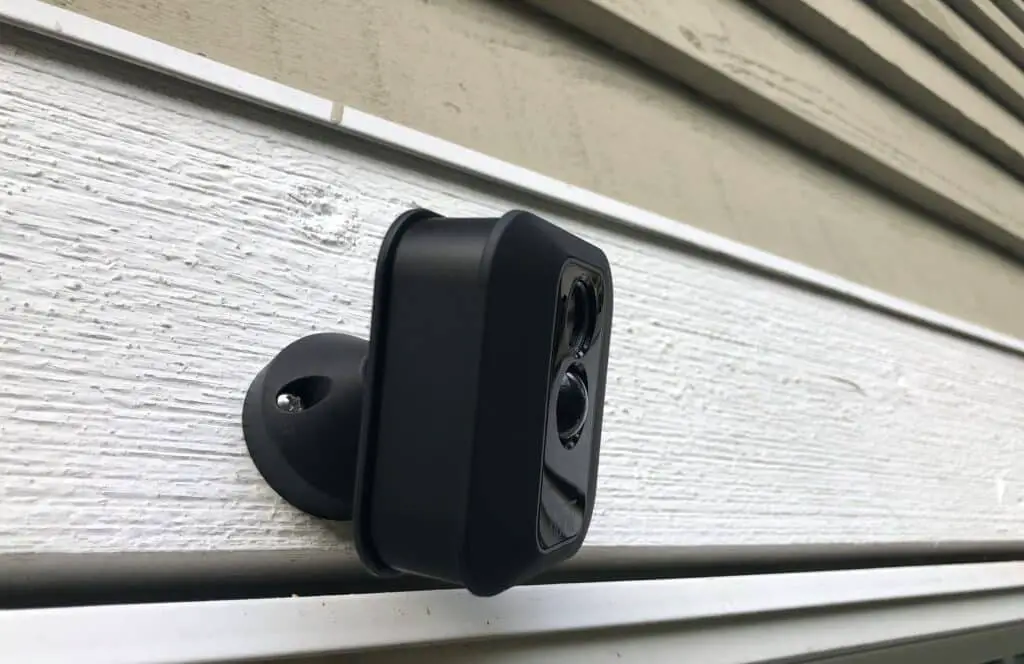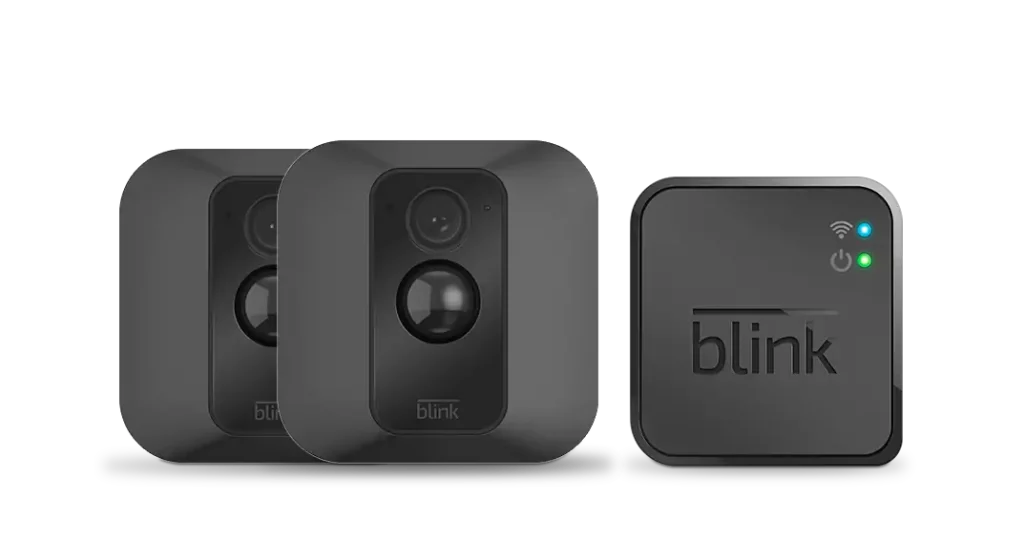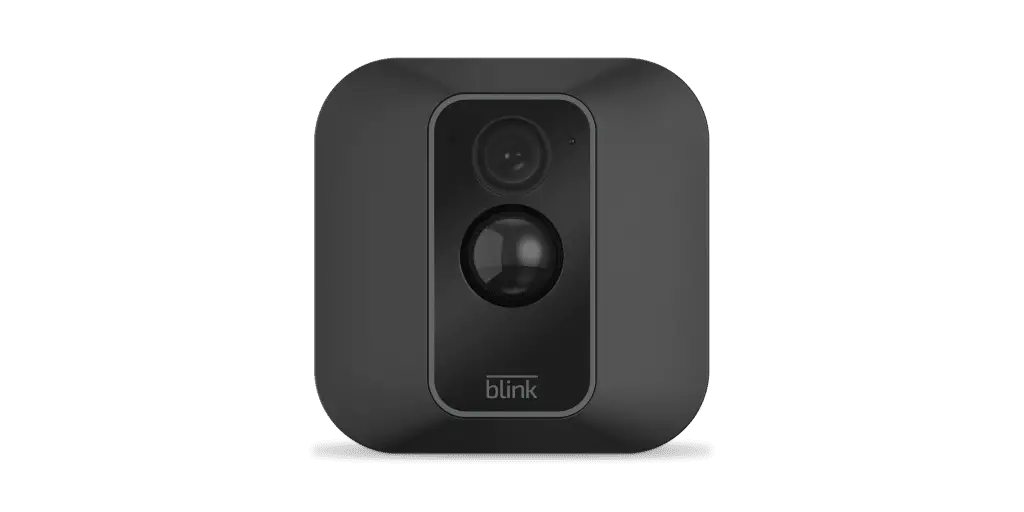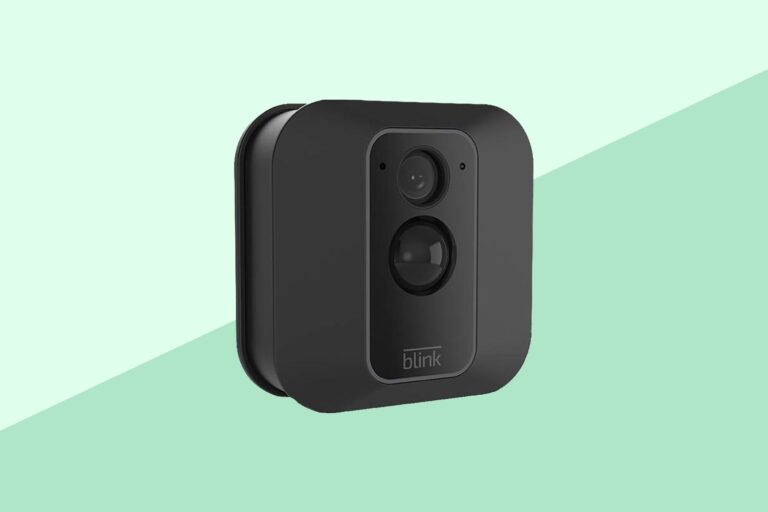Introduction
The advent of smart home security systems has revolutionized the way we protect and monitor our homes. Among the innovative devices gaining popularity are Blink cameras, designed to provide homeowners with real-time surveillance and peace of mind. However, some users have reported an intriguing issue: a green flashing light on their Blink cameras. This phenomenon has sparked curiosity and concern, leaving homeowners wondering, “Why does my Blink camera flash green?”
The possible causes of this peculiar behavior and explore the significance of different colored indicator lights on these devices. Understanding the reasons behind the green flash will enable users to distinguish normal operations from potential issues that might require attention or troubleshooting. Examine the various functions of Blink camera indicator lights and what each color represents.
By deciphering the language of the blinking lights, users can better interpret their camera’s status and respond accordingly. This will involve technical factors, such as software updates, connectivity status, power issues, and environmental influences. Additionally, we will address common misconceptions and debunk myths surrounding the green flash phenomenon.

Why is my Blink camera flashing red and green?
When the camera is not connected to the internet, a red light appears on the Blink Mini. Start by unplugging and replugging the Mini camera. If the Mini had already linked to your network, connecting it again causes the red LED to turn solid blue and flickering green.
If you find your Blink camera flashing red and green, it can be a cause of concern and confusion. The combination of red and green lights on a Blink camera typically indicates an issue with the camera’s synchronization or connectivity. When the camera is trying to sync with the Blink server or your home network, it may display this red and green flashing pattern.
Several factors could be contributing to this behavior. First and foremost, it’s essential to ensure that your Blink camera is within the range of a stable Wi-Fi connection. Weak or intermittent Wi-Fi signals can disrupt the camera’s synchronization process, leading to the red and green flashing lights.
Additionally, verifying that your Blink camera and the Sync Module have the latest firmware updates can resolve compatibility issues and improve performance. Outdated firmware can lead to erratic behavior, including the flashing of red and green lights. Moreover, check the physical placement of your Blink camera and Sync Module. Obstructions or interference from other electronic devices can disrupt the camera’s connection to the Sync Module and cause the flashing lights.
What do lights on Blink camera mean?
All Blink cameras have a blue LED light (illuminator) on them that lights up when the camera is recording. All cameras, however, allow you to manually turn off the blue activity light, so if you want to see if it’s recording, make sure the status LED is set to recording.
The lights on a Blink camera serve as essential indicators, providing users with valuable information about the camera’s status and operation. These lights, which are deftly positioned on the front panel of the camera, can communicate a variety of messages through various color schemes and blinking patterns.
Steady Blue Light
A steady blue light indicates that the Blink camera is powered on and functioning correctly. When you see this light, it means the camera is ready to capture and record any motion or activity in its field of view.
Blinking Blue Light
A blinking blue light indicates that the camera is actively syncing with the Blink server or your home network. During this process, the camera is connecting and ensuring that it is up to date with the latest firmware and settings.
Solid Green Light
A solid green light typically means that the camera has successfully synced with the Blink server or your home network. It indicates that the camera is online and ready to send alerts or record footage when motion is detected.
Blinking Green Light
A blinking green light might indicate that the Blink camera is currently undergoing a software update. During this time, the camera may not be accessible or responsive to commands.
Red Light
A red light on a Blink camera usually indicates low battery power. When you see this light, it’s essential to replace or recharge the camera’s batteries promptly to maintain uninterrupted surveillance.
Can Blink cameras see in the dark?
Blink cameras have an 850nm infrared (IR) LED light to show you clear video in areas of complete darkness. If Night Vision is enabled, your camera will be able to view and record in a low light or non-lit environment.
Blink cameras are equipped with infrared (IR) night vision technology, allowing them to see in the dark. This feature enables the cameras to capture clear and detailed footage even in low-light or completely dark environments.
When the ambient light levels drop below a certain threshold, the Blink camera’s infrared sensors automatically activate. These sensors emit infrared light, which is invisible to the human eye but illuminates the camera’s field of view. The camera’s image sensor then detects the reflected infrared light, converting it into a black-and-white image that can be seen on the live feed or recorded footage.
The infrared night vision capability of Blink cameras ensures that users can continue to monitor their homes and surroundings even during nighttime hours. Whether it’s to keep an eye on potential intruders, monitor pets, or observe nocturnal wildlife, the night vision feature enhances the camera’s versatility and effectiveness as a home security and surveillance tool.
How do I hide my Blink camera?
Hang It Behind a Mirror
Find a mirror that is large enough to cover the camera and hang it in front so that the Blink camera is behind. Hidden from view, the camera is still able to record through the glass.
Hiding your Blink camera is a crucial step to maintain its effectiveness as a discreet surveillance tool and to protect it from potential tampering or theft. While hiding the camera, it’s important to ensure that it still captures a clear view of the intended area. Here are some tips on how to hide your Blink camera effectively:
Strategic Placement
Choose a location that provides an unobstructed view of the area you want to monitor while keeping the camera discreet. Look for spots that blend naturally with the surroundings, such as plants or decorations, to avoid drawing attention.
Use Camouflage Skins
Consider using camouflage skins or cases designed specifically for Blink cameras. These skins can help the camera blend seamlessly with its surroundings, making it less noticeable to passersby.
Conceal Wires
If your camera requires wires for power, ensure that they are also hidden or well-concealed. Tuck the wires behind objects or use cable clips to secure them along walls or corners.
Utilize Mounting Accessories
Use mounting brackets and accessories that allow you to position the camera at unique angles or locations. This can help you find the best vantage point while keeping the camera discreet.
Outdoor Housing
If you’re placing the camera outdoors, consider using an outdoor housing enclosure. These housings provide extra protection from the elements while making the camera less conspicuous.
Test the View
Before finalizing the camera’s placement, test the view and video quality to ensure it adequately covers the intended area while remaining hidden from sight.

Why is my Blink camera showing blue and green light?
The blink sync module displays solid blue and green lights when working and correctly paired to your home network. This means the module is in sync with the cloud servers and “online” on the app. Sometimes, the module isn’t working as it should; observing the LEDs should guide you on how to deal with the issue.
If your Blink camera is showing a blue and green light simultaneously, it typically indicates that the camera is in the process of syncing or connecting to the Blink server or your home network. The green light implies that the camera is attempting to connect, while the blue light indicates that the camera is turned on and ready to use.
During the syncing process, the camera ensures that it has the latest firmware updates and settings to operate optimally. This synchronization is crucial for the camera to function correctly and to communicate with the Blink app or other devices on your network.
Several factors can trigger the syncing process or disrupt it, leading to the blue and green light display:
First-Time Setup
When setting up a new Blink camera for the first time, it will go through the syncing process to establish a connection with your network.
Power Cycle or Reset
After a power cycle or camera reset, the Blink camera might need to resync with the server and your network.
Connectivity Issues
Weak or intermittent Wi-Fi signals can cause the camera to lose its connection, prompting it to try syncing again.
Firmware Update
If there’s a new firmware update available for the camera, it will initiate the syncing process to apply the update.
How do I get the color on my Blink camera?
The Blink Outdoor cameras use an IR illuminator for night vision. This makes the image black and white. You can turn the IR illuminator off by going to the camera settings. This will make the image color.
Blink cameras are designed to capture video in color during daytime or well-lit conditions. However, during low-light or nighttime situations, the cameras automatically switch to black-and-white mode to utilize their infrared night vision capability. Since the scene is illuminated by infrared light, switching to black-and-white mode enables the cameras to take crisper pictures in low-light conditions.
To ensure that your Blink camera captures color footage during the day, consider the following tips:
Sufficient Daylight
Ensure that the camera’s field of view receives ample natural daylight. Adequate sunlight will enable the camera to record in color.
Avoid Obstructions
Keep the camera’s lens free from obstructions such as curtains, blinds, or objects that may cast shadows. Unobstructed view allows the camera to receive sufficient light for color recording.
Check Camera Settings
Make sure the camera settings are set up properly for color recording in the Blink app or via your Blink account. The camera should typically be in “Auto” mode so that it can switch between color and black-and-white modes depending on the lighting.
Good Quality Batteries
Ensure that your Blink camera has fully charged and good-quality batteries. Low battery power can affect camera performance and its ability to capture color footage.
My Blink camera is not functioning despite the green flashing. What can I do?
If your Blink camera is not functioning properly despite showing a green flashing light, there could be various reasons behind the issue. Here are some troubleshooting steps you can take to resolve the problem:
Restart the Camera
Try restarting the Blink camera by removing its batteries for a few seconds and then reinserting them. This simple reboot can often fix minor glitches.
Check Wi-Fi Connection
Ensure that your camera is within range of a stable Wi-Fi connection. Weak or intermittent Wi-Fi signals can lead to connectivity issues.
Update Firmware
Check if your Blink camera and Sync Module have the latest firmware updates. Outdated firmware can cause compatibility problems and affect the camera’s performance.
Verify Camera Sync
Double-check that the camera is correctly synced with the Blink server and your home network. If it’s not properly synced, follow the setup process again to establish the connection.
Check Camera Placement
Ensure that the camera is positioned correctly and pointed towards the intended area. Obstructions or incorrect placement can affect its performance.
Replace Batteries
Even if the green light is flashing, the batteries might not have enough power to operate the camera properly. Try replacing the batteries with fresh ones.
Contact Support
If you’ve tried the above steps and the issue persists, consider reaching out to Blink’s customer support for further assistance.
Does the green flashing light impact the camera’s battery life?
The green flashing light is designed to be energy-efficient and should not significantly impact the camera’s battery life. However, if you notice a rapid battery drain or the camera isn’t lasting as long as expected, it’s essential to ensure the camera is fully charged and consider replacing the batteries if necessary.
The green flashing light on a Blink camera typically indicates that the camera is in the process of syncing or connecting to the Blink server or your home network. While this flashing light does require some power to function, its impact on the camera’s battery life is generally minimal.
Blink cameras are designed to be energy-efficient, and the flashing green light is a standard part of their normal operation. The cameras are programmed to manage power consumption efficiently, and the flashing light duration is relatively short during the syncing process. The majority of the battery usage in a Blink camera is attributed to recording and transmitting video footage when motion is detected.
The green flashing light, by comparison, consumes a fraction of the power needed for video recording and transmission. However, it’s worth noting that any continuous usage of the camera, including live streaming or prolonged syncing attempts, can contribute to a more significant drain on the battery over time. To optimize battery life, users should ensure that their Blink cameras are placed strategically, with proper Wi-Fi connectivity and within range of a strong signal.

Conclusion
The green flashing light on Blink cameras is a commonly encountered issue that has piqued the curiosity of users seeking to understand its significance. Throughout this exploration, we have unraveled the mystery behind this phenomenon and shed light on the various reasons why a Blink camera might flash green. Understanding the significance of indicator lights on these devices is crucial in interpreting their status accurately.
It became evident that some instances of the green flash are normal operations and pose no cause for concern, while in other cases, troubleshooting may be required to address underlying issues. By debunking myths and clarifying misconceptions surrounding the green flash phenomenon, we aimed to provide users with accurate information to make informed decisions about their Blink cameras’ maintenance and operation.
Regular software updates, strong connectivity, and appropriate placement can go a long way in ensuring the optimal functionality of Blink cameras. As technology continues to evolve, it is essential for users to stay informed about the features and behaviors of their smart home devices. Armed with knowledge about the green flashing light, users can confidently monitor their Blink cameras and make the most of their home security investment.

